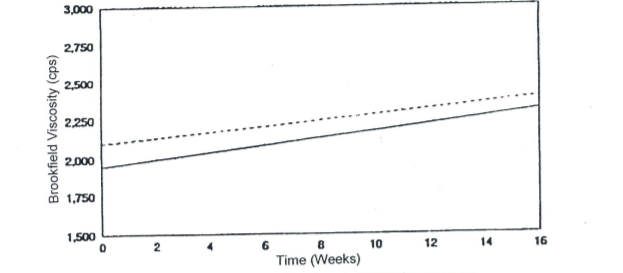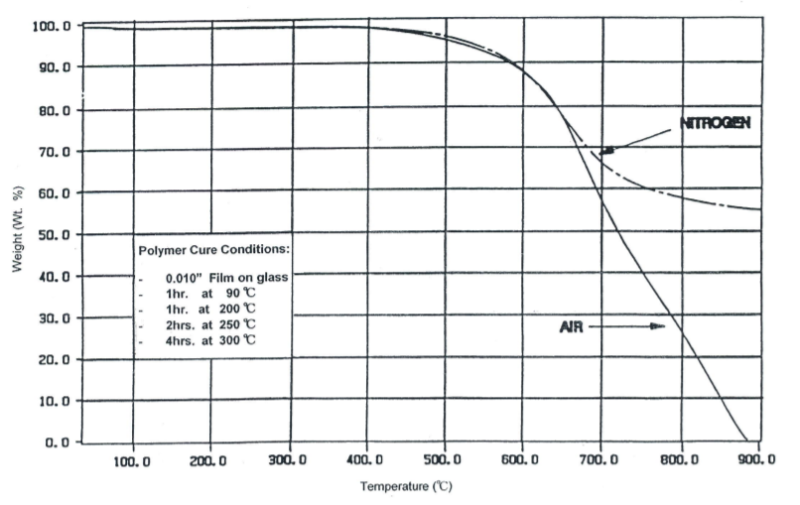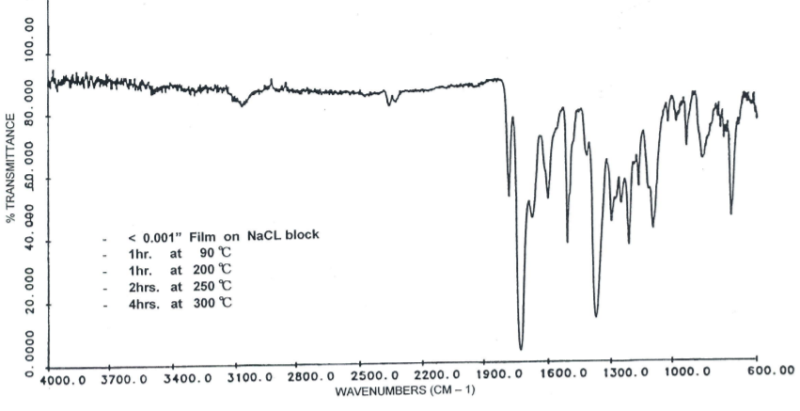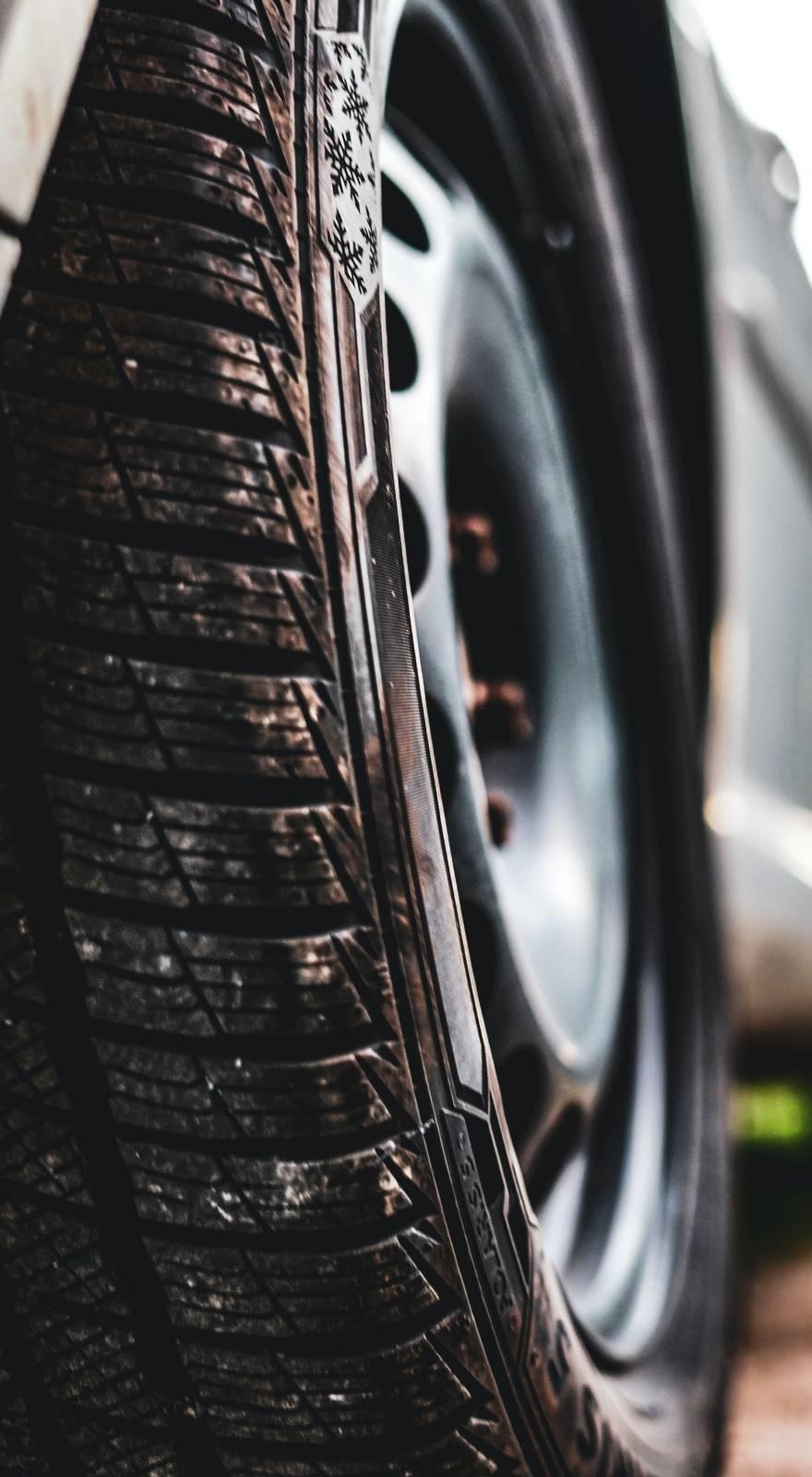Knowde Enhanced TDS
Identification & Functionality
- Chemical Family
- Reinforcement Material
- CASE Ingredients Functions
- Technologies
- Product Families
Features & Benefits
- Labeling Claims
- CASE Ingredients Features
- Features
- Has high heat resistance. Can be used continuously at 260°C (can be used at up to 400°C for a short period of time).
- Also has high chemical resistance, high adherence properties, and high permeability.
- Can also be processed for use in press molding, or foam (heat-resistant foam) molding.
- Performance
Extended aging of coatings on aluminum panels was carried out at 300C with the following results:
Hours % Weight Loss 90 2 1170 14 2170 29 Skybond 705 pigmented with aluminum powder, coated at 3 mil wet film thickness on mild steel and cured 20 minutes at 225 C will withstand 3 minute exposure to a Bunsen burner flame. The coating will not lose adhesion even when quenched in cold water.
Clear, unpigmented coatings also withstand 3 minutes of exposure to the Bunsen name. The film slowly will turn a dark brown color but will remain intact. Longer exposures eventually will char and destroy the film but it will protect its substrate for short times under very severe conditions. Cured films show excellent solvent resistance although softening by a strong base will occur.
Applications & Uses
- Applications
- Compatible Reinforcements
- Coating Type
- Composites End Use
- Composites Processing Methods
- Applications & Uses
- Airplane structural materials
- Engine covers
- Radar domes
- Matrix resin for high strength fibers such as glass, carbon, and aramid
- Formed parts
- Heat-resistant bearings
- Heat-resistant bushings
- Piston rings
- Coating materials / Ink
- Heat-resistant adhesives
- Fiber-sizing agents (Binder)
- Impregnants / Sealing agents
- Drying and Curing
Skybond 705 is a low solids solution in of a polyamic acid polymer which can be converted to a polyimide by curing at elevated temperatures. It produces glossy, pale yellow
coatings which adhere well to metallic substrates. The coatings are resistant to abrasion, impact, solvents and high temperatures.Initial drying of wet coatings of 705 to remove solvent should be done at a low temperature to prevent polymerization in the of solvent which can result in poor film formation. Solvent removal at 60 C for minutes is a good starting After initial low temperature drying to remove solvent and film formation, the coating should be cured at a temperature above 200 C. Cure at 250C for 20 minutes is recommended for initial studies.
Extended cure for up to 3 hours at 225 C should be evaluated depending on the application requirements. Temperatures up to 300 C can be used for cure. For multiple thin coats, dry at a temperature no higher than 150 C between coats prior to the higher temperature final cure.
- Formulations
Coating formulations can be prepared by diluting Skybond 705 with solvents that include toluene, xylene, ethylene glycol, hexylene glycol and n-butanol. Films containing up to 35% of these diluents can subjected to temperatures of 225 C immediately after coating at a 3 mil wet film thickness without blistering.
Aluminum, carbon black and titanium dioxide can be used to pigment Skybond 705. Carbon black at 10% on resin is all that is required to give a black coating but 3/1 titanium to resin still gives a light yellow coating instead of white. Aluminum pastes and powders have been used at 1/1 on the resin. Powdered pigments appear to give maximum resistance to high temperature blistering although their coatings are not quite as smooth and shiny as those made with pastes. Certain diluents may not be compatible with the solvents used to prepare the aluminum pastes.
Properties
- Typical Properties
| Value | Units | Test Method / Conditions | |
| Cured Solids | 16.5-19.5 | % | S-001.0 |
| Viscosity at 25°C | 1100-2600 | cps | Brookfield LVF S-004.0 |
| Specific Gravity at 25°C | 1.05-1.08 | — | S-005.0 |
Technical Details & Test Data
- Solvent
The solvent in Skybond 705 is N‐ methyl-2‐ pyrolidone (NMP) with some xylene present. NMP can be used for dilution.Other solvents having limited dilution capability include xylene,toluene and n‐ butanol.
- Viscosity Stability

- Thermogravimetric Analysis Of Skybond 705 In Nitrogen And In Air

- Infrared Analysis Of Cured SKYBOND 705

Storage & Handling
- Shelf Life and Storage
- Product shelf life is the period of time the SKYBOND product is expected to stay within the limits of its respective product specification.
- The shelf life of SKYBOND products is 3 months from date of shipment when stored at 40°F (4°C) or below.
- Short-term exposure to normal ambient conditions will not cause problems with the resin.
- For long term storage the material should be stored at temperatures of 40 F or lower to reduce viscosity build which is common with these resins.
- Material stored for longer periods of time than 3 months or at higher temperatures should be usable if still within specification limits for viscosity and solids. If the viscosity has advanced above its specification limit it may still be usable if it can be diluted to reduce the viscosity into its specification range while still remaining within the solids specification limits.
- Water contamination should be avoided. Thus the resin solution should be allowed to warm to room temperature before the container is opened and the resin used.
- If the resin solution is exposed to air at low temperature water will condense on the resin solution surface and be rapidly dissolved in the solution. Water will cause hydrolysis which lowers the molecular weight of the resin and causes curing problems in these high solids Skybond resins.
- Oxygen contamination should also be minimized as it can lead to oxidation of amines in long term exposure and cause problems in cure cycles.
- Storage
A good practice is to store Skybond 705 below 5°C and use it within three months of receipt. Skybond 705 may be stored for longer periods of time below 5°C depending on the application. Lower temperatures extend storage life. Storage above 25°C is not recommended. Avoid moisture contamination and contact with iron which will react with the resin. Also, avoid contact with materials that will be attacked by the solvent in the product. Stainless steel is suitable for use. Volatile products given off during drying and curing operations are mainly aromatic acids, aromatic nitrogenous compounds and solvents. When exposing Skybond 705 to high-temperature conditions, mechanical exhaust ventilation must be employed to insure good air movement and the avoidance of vapor inhalation.

